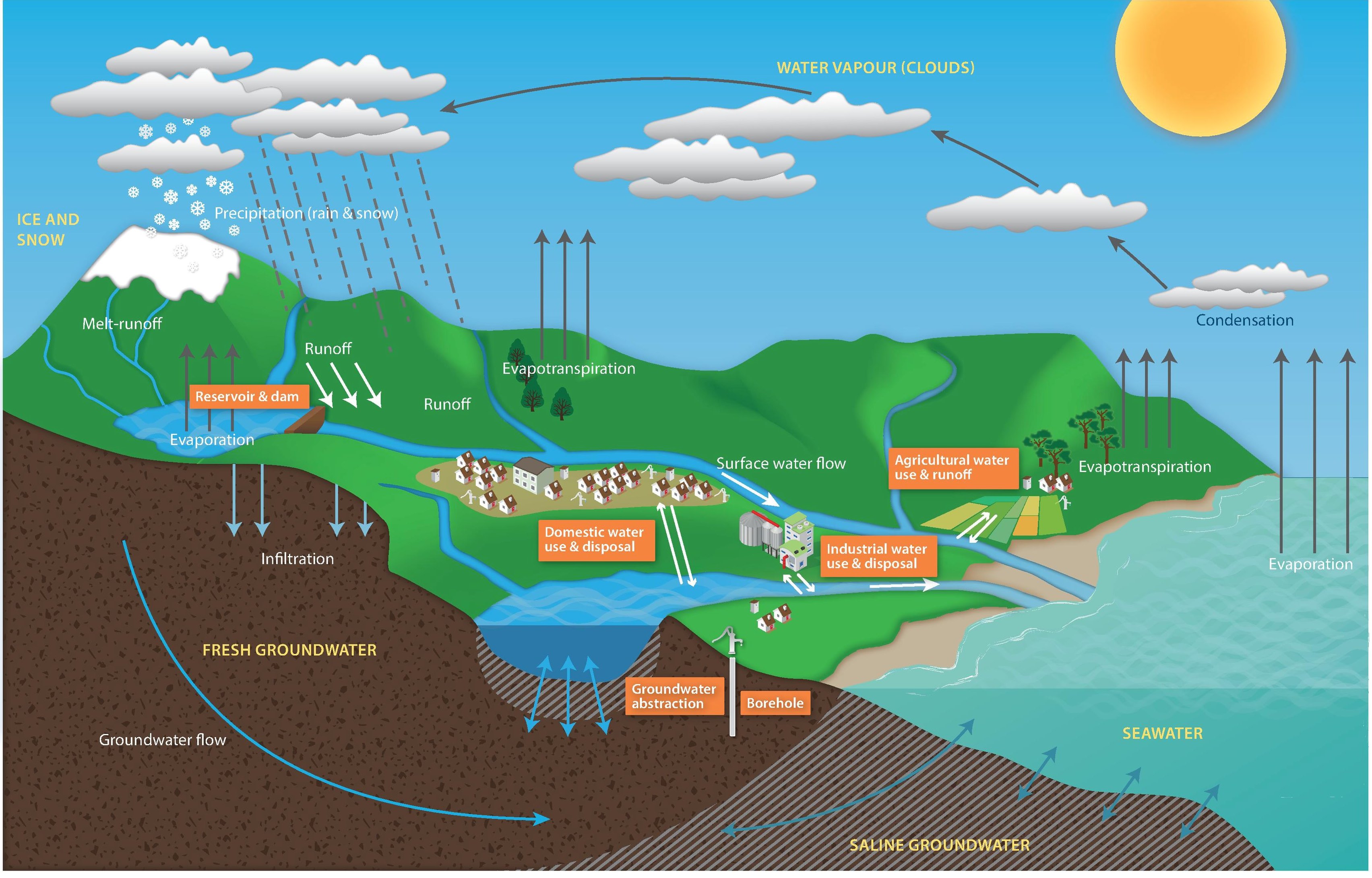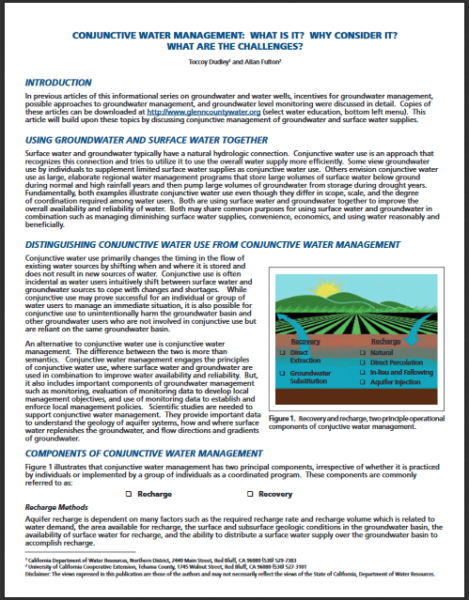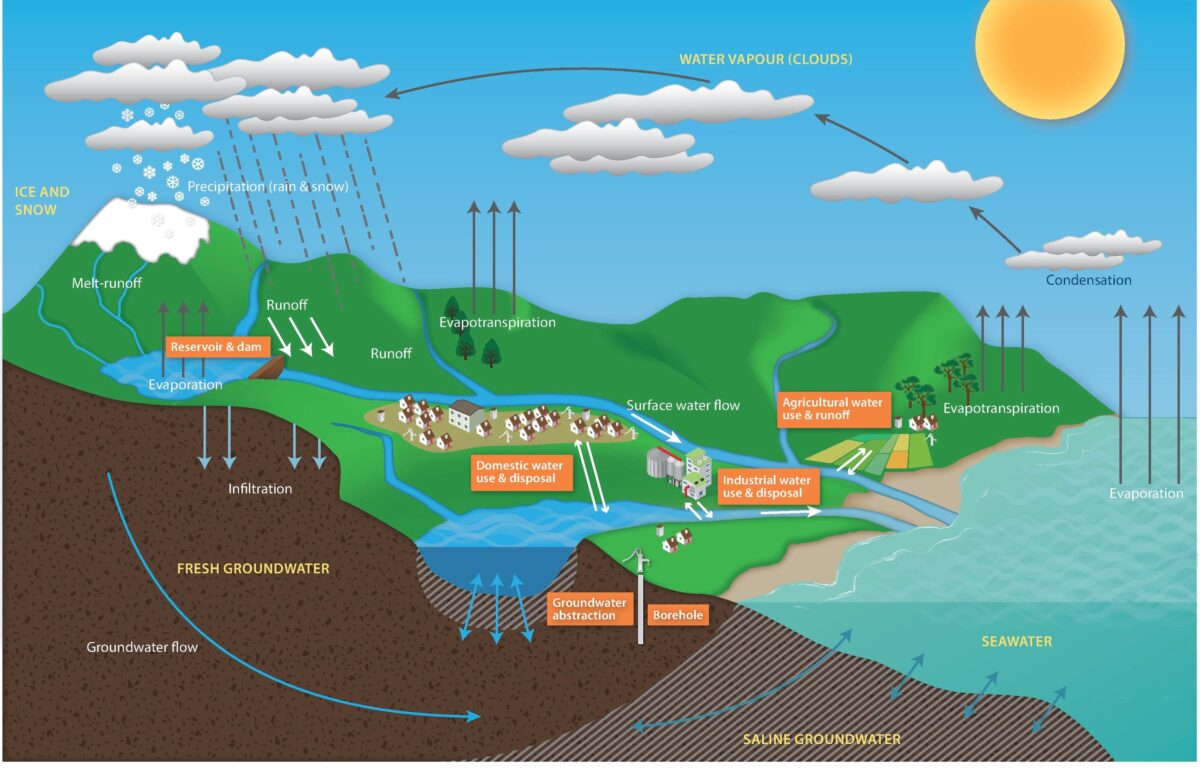 Conjunctive use is a term used to describe the planned use of both surface water and groundwater resources to maximize total water availability in a region long-term. For example, a region with surface water supplies may choose to undertake an aggressive water recharge program in wet years, with the goal of having additional groundwater in storage that can be used during dry years.
Conjunctive use is a term used to describe the planned use of both surface water and groundwater resources to maximize total water availability in a region long-term. For example, a region with surface water supplies may choose to undertake an aggressive water recharge program in wet years, with the goal of having additional groundwater in storage that can be used during dry years.
Conjunctive use is not a new concept in California. Indeed, many agencies have implemented conjunctive management programs as buffers against drought, subsidence and groundwater level decline. Conjunctive management can be large-scale, like the Semitropic Water Storage District’s 2.1 million acre feet (MAF) capacity operation or in urban environments, like the Compton Water Department’s 2,289 acre feet (AF) groundwater bank.
Conjunctive management projects have many benefits. They improve local water supply, reduce groundwater overdraft, increase flood protection, help meet environmental needs, improve groundwater quality, and counter subsidence.
Key publications
Conjunctive Management and Groundwater Storage: Resource Management Strategy
[pdf-embedder url=”https://f0b.362.mwp.accessdomain.com/wp-content/uploads/2020/09/CWP-RMS-Ch-8-ConjMgt_GW_Storage_July2016.pdf”]Conjunctive water management: What is it? Why consider it? What are the challenges?
 Conjunctive water use primarily changes the timing in the flow of existing water sources by shifting when and where it is stored and does not result in new sources of water. Conjunctive use is often incidental as water users intuitively shift between surface water and groundwater sources to cope with changes and shortages.
Conjunctive water use primarily changes the timing in the flow of existing water sources by shifting when and where it is stored and does not result in new sources of water. Conjunctive use is often incidental as water users intuitively shift between surface water and groundwater sources to cope with changes and shortages.
While conjunctive use may prove successful for an individual or group of water users to manage an immediate situation, it is also possible for conjunctive use to unintentionally harm the groundwater basin and other groundwater users who are not involved in conjunctive use but are reliant on the same groundwater basin.
Conjunctive Use of Groundwater and Surface Water
[pdf-embedder url=”https://f0b.362.mwp.accessdomain.com/wp-content/uploads/2020/09/FOSTER-et-al.-2010-Conjunctive-Use-of-Groundwater-and-Surface-Water.pdf” title=”FOSTER et al. 2010 Conjunctive Use of Groundwater and Surface Water”]Santa Ana River Conservation and Conjunctive Use Program
The Santa Ana River Conservation and Conjunctive Use Program (SARCCUP) is a watershed-scale collaborative program designed to improve the Santa Ana River watershed’s water supply resiliency and reliability by increasing available dry-year yield from local groundwater basins.
SARCCUP consists of multiple projects that address one or more of the following main program elements: 1) Conjunctive Use Program for the watershed; 2) Invasive weed removal and habitat creation/restoration; and 3) Water use efficiency and water conservation measures.
“Conjunctive use” refers to coordinating the management of surface water and groundwater to improve the overall reliability of water supply (Pacific Institute, 2011). The SARCCUP Conjunctive Use Program may include existing and new facilities that would allow for surface water to be recharged and stored in local groundwater basins during wet years and then pumped during dry periods, droughts or other emergency conditions.
Conjunctive use articles at Maven’s Notebook
- Notebook conjunctive use

Explore conjunctive use at the California Water Library
{{ document.post_title }}
{{ document.publisher }} | {{ document.document_date }}
{{ document.post_content_short }}



